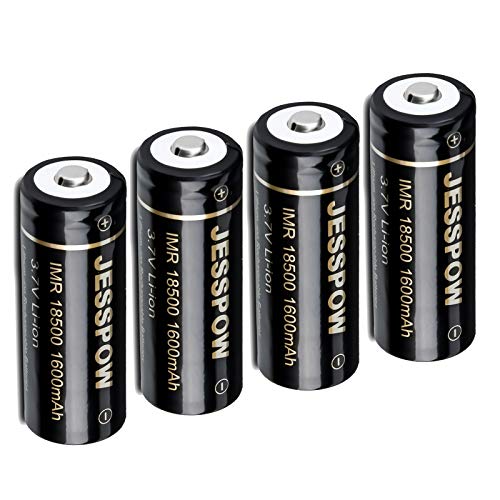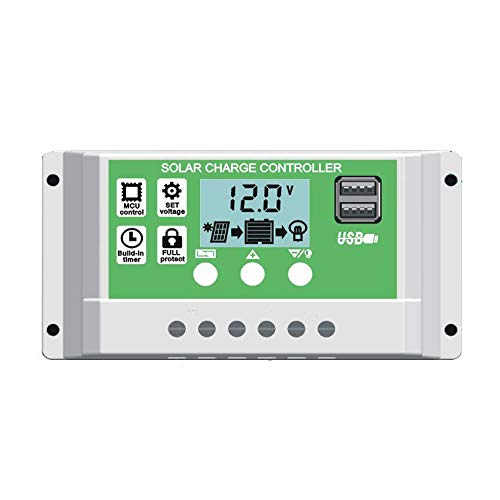In this step-by-step guide, we will show you how to effectively maintain a Lithium-ion solar battery. The purpose of this guide is to help you prolong the lifespan and maximize the performance of your battery, ensuring that it remains efficient in storing and providing energy from your solar system. By following these maintenance practices, you can avoid common problems and ensure that your Lithium-ion solar battery continues to serve you reliably for many years to come.
Top-selling Lithium-ion Solar Batteries
Understanding Lithium-ion Solar Batteries
A Lithium-ion solar battery is a type of rechargeable battery that is specifically designed to store the energy generated by solar panels. It is composed of several components including lithium-ion cells, a battery management system (BMS), and a casing for protection.
One of the key benefits of Lithium-ion solar batteries is their high energy density, which allows them to store a large amount of energy in a compact size. They are also known for their long lifespan, with many batteries being able to last for more than a decade. Furthermore, they have a high charge/discharge efficiency, which means that they can effectively convert and store solar energy.
For example, imagine you have a Lithium-ion solar battery installed in your home to store the energy generated by your solar panels during the day. This battery can then be used to power your home during the evening or when the sun is not shining. Its high energy density ensures that you have a sufficient amount of stored energy to meet your household’s needs, while its long lifespan ensures that you can rely on it for many years to come. Additionally, its high charge/discharge efficiency means that you can effectively utilize the energy stored in the battery without significant energy loss.
Safety Precautions
When handling and maintaining Lithium-ion solar batteries, it is important to follow certain safety precautions. Here are some guidelines to ensure safe handling and maintenance of these batteries:
- Ensure proper ventilation: Place the batteries in a well-ventilated area, away from flammable materials and direct sunlight. This helps prevent overheating and reduces the risk of fire.
- Use appropriate protective gear: Wear safety gloves and goggles when handling the batteries to protect yourself from potential chemical spills or leaks.
- Avoid overcharging: Do not leave the batteries connected to the charger for extended periods. Once fully charged, disconnect them from the charger to prevent overcharging, which can cause damage to both the battery and the charger.
- Store in a cool, dry place: Store the batteries in a cool and dry location, away from extreme temperatures and moisture. This helps maintain their performance and prolong their lifespan.
- Avoid physical damage: Handle the batteries with care and avoid dropping or subjecting them to physical impact. Damaged batteries can leak or short circuit, leading to potential hazards.
- Follow disposal and recycling guidelines: When the batteries reach the end of their lifespan, do not dispose of them in regular trash. Follow proper recycling procedures to ensure their safe disposal and environmental protection.
By adhering to these safety precautions, you can ensure the safe handling and maintenance of Lithium-ion solar batteries.
Regular Inspection
Regularly inspecting the battery is crucial to ensure its optimal performance and prevent potential problems. By checking for signs of damage or wear, we can identify early warning signs and take necessary actions to avoid battery failure or other related issues. To perform a battery inspection, start by visually examining the battery for any visible cracks, leaks, or corrosion. Additionally, test the battery using a multimeter to determine its voltage and overall condition. By regularly inspecting the battery, we can maintain its longevity and reliability.
Cleaning the Battery
To safely clean the battery and remove any dirt or debris, follow these instructions:
- Prepare the necessary tools: Gather a pair of rubber gloves, safety goggles, a wire brush or toothbrush, baking soda, water, and a small brush or cloth.
- Ensure safety: Put on the rubber gloves and safety goggles to protect your skin and eyes from any chemicals or debris.
- Disconnect the battery: Before cleaning, disconnect the battery by removing the negative terminal first, followed by the positive terminal. This prevents accidental electrical discharge.
- Inspect the battery: Check the battery for any cracks, leaks, or signs of damage. If you notice any, it’s best to consult a professional for further assistance.
- Removing loose dirt: Use the wire brush or toothbrush to gently scrub off any loose dirt or debris from the battery’s surface. Be careful not to touch any electrical connections.
- Create a cleaning solution: In a small container, mix one tablespoon of baking soda with one cup of water. Stir until the baking soda is completely dissolved.
- Clean the battery terminals: Dip the brush or cloth into the baking soda solution and carefully clean the battery terminals. Ensure that the solution reaches all sides of the terminals. If necessary, use the toothbrush to scrub any stubborn deposits.
- Rinse the battery: With clean water, rinse the battery terminals and surrounding areas thoroughly. Avoid getting water inside the battery or other electrical components.
- Dry the battery: Use a clean cloth to dry the battery and terminals. Make sure there is no moisture left before reattaching the battery cables.
- Reconnect the battery: Reattach the positive terminal first, followed by the negative terminal. Ensure they are tightened securely, but avoid overtightening.
Remember to handle the battery with care, as it contains corrosive chemicals. By following these steps, you can safely clean the battery and maintain its optimal performance.
Charging the Battery
To properly charge a Lithium-ion solar battery, it is crucial to follow the recommended charging voltages and durations. Firstly, ensure that the charger you are using is compatible with Lithium-ion batteries and has the appropriate voltage output. Connect the charger to the battery, making sure the polarity is correct. Set the charging voltage to the recommended level, typically between 3.6-3.7 volts per cell. Monitor the charging process closely and avoid overcharging by disconnecting the charger once the battery reaches its full capacity. Charging durations can vary from a few hours to a full day, depending on the battery capacity and the charger’s charging current. It is essential to consult the battery manufacturer’s guidelines for specific recommendations.
Discharging the Battery
To discharge the battery and prolong its lifespan while preventing overcharging, follow these steps:
- Use the device until the battery is nearly empty: Continue using your device until the battery level is critically low or until it shuts down automatically.
- Keep the device turned off: Ensure the device is completely powered off and not in sleep or standby mode.
- Connect the charger: Plug in the charger to the device and the power source.
- Let it charge fully: Allow the battery to charge until it reaches 100%. Do not interrupt the charging process.
- Disconnect the charger: Once the battery is fully charged, unplug the charger from the device and the power source.
By discharging the battery periodically and avoiding overcharging, you can extend its overall lifespan and maintain its efficiency over time.
Storage Guidelines
To store Lithium-ion solar batteries when not in use for extended periods, follow these guidelines:
- Fully charge the battery: Before storing the battery, ensure that it is fully charged. This helps prevent the battery from entering a deeply discharged state, which can lead to capacity loss or irreversible damage.
- Store in a cool and dry place: Find a cool and dry location to store the battery. Extreme temperatures, both hot and cold, can degrade the battery’s performance and lifespan. Avoid storing the battery in direct sunlight or near sources of heat or moisture.
- Maintain a partial charge: Lithium-ion batteries should not be stored at full capacity or completely depleted. Aim to store the battery at around 50% charge. This helps to minimize self-discharge without putting excessive strain on the battery, prolonging its overall health.
- Check battery periodically: Even during storage, it is important to periodically check the battery’s charge level. If the battery’s charge drops below a certain threshold, it can suffer from voltage imbalance or deep discharge, which can degrade its capacity. If needed, recharge the battery to the recommended storage charge level.
By following these guidelines, you can ensure that your Lithium-ion solar batteries remain in optimal condition during extended periods of non-use.
Troubleshooting
Addressing common issues and providing troubleshooting tips is essential for helping users resolve problems. To effectively troubleshoot, start by identifying the problem and gathering relevant information. Then, research common solutions or workarounds and apply them step by step, checking if the issue persists. Lastly, test the solution and provide feedback to ensure the problem is resolved.
Key Takeaways for Battery Maintenance
In conclusion, maintaining a Lithium-ion solar battery is crucial for ensuring its optimal performance and longevity. Throughout this guide, we have discussed several key points to keep in mind. Firstly, it is essential to monitor and maintain the battery’s charge level within the recommended range, as overcharging or deep discharging can significantly reduce its lifespan. Secondly, protecting the battery from extreme temperatures and avoiding exposure to direct sunlight can prevent damage and enhance its efficiency. Additionally, implementing a regular cleaning routine for the solar panels will maximize their energy-generating capacity, ultimately benefiting the battery. Lastly, it is worth noting that routine inspections and timely replacement of any faulty components or worn-out cables are essential for a well-functioning system. By following these maintenance practices, we can ensure the longevity and optimal performance of our Lithium-ion solar batteries, allowing us to make the most of our solar power system for years to come.
Necessary Equipment
Maximizing Battery Lifespan
Proper Usage and Maintenance Guidelines
- Understand the capacity and specifications: Start by carefully reading the user manual and familiarizing yourself with the battery’s capacity, voltage, and power output. This will help you determine the suitability of the battery for your needs
- Properly connect the battery: Before connecting the battery to a solar panel or an inverter, ensure that the positive and negative terminals are correctly aligned. This will prevent any short circuits or damage to the battery and the connected device
- Charge the battery with solar power: Connect the solar panel to the battery using the appropriate charging cables and ensure you position the panel in a location with maximum sunlight exposure. Allow the battery to charge fully before using it for the first time
- Safely store and transport the battery: When not in use, store the lithium-ion solar battery in a cool and dry place, away from direct sunlight, extreme temperatures, and flammable materials. If you need to transport the battery, ensure it is securely packed and protected from any potential damage
- Monitor battery status: Keep an eye on the battery’s charge level and other indicators, if available. This will help you understand when to recharge the battery and prevent over-discharging, which can negatively impact its performance and longevity
- Remember, it’s essential to read and follow the specific instructions provided by the manufacturer for your particular Lithium-ion solar battery model












![[Upgraded]BigBlue 3 USB-A 28W Solar Charger(5V/4.8A Max), Portable SunPower Solar Panel Charger for Camping, IPX4 Waterproof, Compatible with iPhone 11/XS/XS Max/XR/X/8/7, iPad, Samsung Galaxy LG etc.](https://m.media-amazon.com/images/I/41gVrkEOUHL.jpg)






